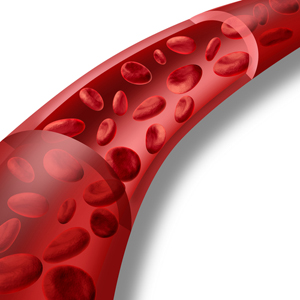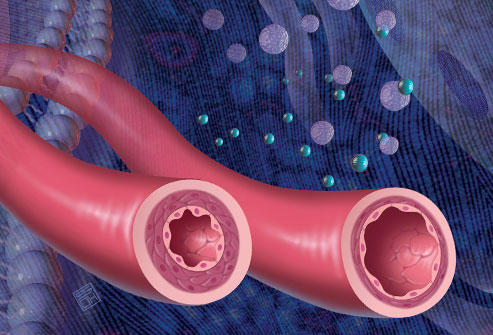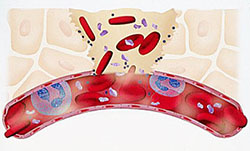5 things that can go wrong with your IUD and what to do about it.
 May 19, 2018
May 19, 2018

High blood pressure results when flowing blood exerts too much force or “pressure”
High blood pressure is a common condition affecting close to 30% of adults. High blood pressure results when blood flowing through blood vessels exerts too much force, or too much “pressure” on the walls of these blood vessels. Over time, this excessive pressure can damage blood vessel walls and lead to significant injury.
Blood pressure measurements include two numbers (e.g. 120/80). The top number, also known as the systolic number, is the pressure inside of the body’s blood vessels when the heart is contracting. When the heart contracts it generates power and pressure that forces blood through the body’s blood vessels. So the systolic number typically will be the higher of the two blood pressure numbers.

Blood pressure monitor
The bottom number, also known as the diastolic number, is the pressure inside of the body’s blood vessels when the heart is relaxed. When the heart is relaxed, it is not generating power or pressure to force blood through the body’s blood vessels. So the diastolic number typically will be the lower of the two blood pressure numbers.
If one or both of the blood pressure numbers is too high, high blood pressure is diagnosed. The top (systolic) blood pressure number is consider to be too high if it is 140 or greater. The bottom (diastolic) blood pressure number is considered to be too high if it is 90 or greater.
Stage 1 high blood pressure is diagnosed when the top blood pressure number is between 140-159 and/or the bottom blood pressure number is between 90-99.
Stage 2 high blood pressure is diagnosed when the top blood pressure number is 160 or higher and/or the bottom blood pressure number is 100 or higher.
Hypertensive Crisis is diagnosed when the top blood pressure is 180 or higher and/or the bottom blood pressure number is 110 or higher.

Damaged narrow blood vessel (left) and healthy blood vessel (right)
High blood pressure is dangerous because excessive pressure applied to blood vessel walls can damage blood vessels. Once damaged, blood vessels may either become scarred or they may rupture. When blood vessels become scarred, the scarring causes them to narrow. Narrow blood vessels deliver less blood and less oxygen to organs than healthy blood vessels do. Ultimately, this can result in severe organ damage.
When high blood pressure causes blood vessels to rupture instead of to scar and to narrow, the organ(s) downstream of the ruptured blood vessel no longer receive an adequate supply of blood and oxygen. This again can severely damage organs.

Ruptured blood vessel
High blood pressure can have many causes. Typically though, high blood pressure results from a combination of bad genes (genetics), bad diet, age, smoking, excessive alcohol use, obesity and a lack of physical activity. As a result, high blood pressure can frequently be prevented by doing the following;

Moderate to strenuous exercise can both prevent and treat high blood pressure
Just like high blood pressure can be prevented by eating a proper diet, avoiding tobacco use, consuming no more than moderate amounts of alcohol, maintaining a healthy body weight and exercising regularly; so too can high blood pressure be treated by doing the same things. When these lifestyle modifications do not bring high blood pressure down enough however, then medications may be used. The most commonly used medications to treat high blood pressure include Diuretics, Beta-Blockers, Calcium Channel Blockers, Angiotensin-Converting Enzyme Inhibitors, Angiotensin Receptor Blockers and Vasodilators.

High blood pressure medication
When medications are needed to treat high blood pressure, the choice of which one will initially be prescribed is frequently very individual. For example, Calcium Channel Blockers tend to work very well in African Americans. While in Caucasian Americans, Beta-Blockers tend to work better. The goal when treating high blood pressure with medications though will always be to use the least number of medications possible to achieve a healthy blood pressure. For some people, one high blood pressure medication will do the trick. For others, a combination of medications may be needed before results are seen.
